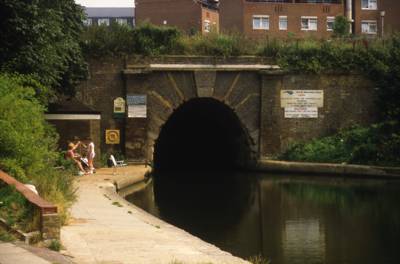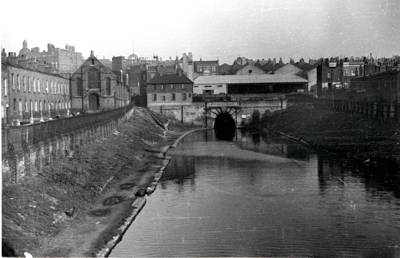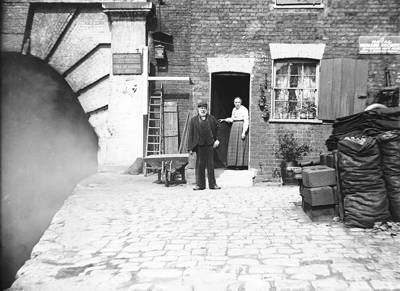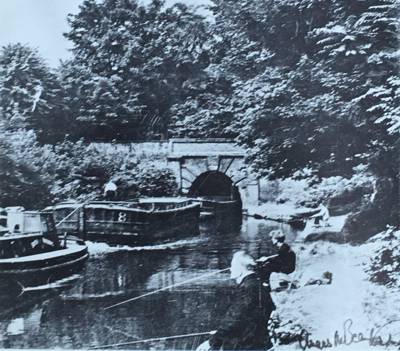West Portal

The west portal of Islington Tunnel. Above: Approximately 1970s. Below: 1900s

Islington tunnel took three years to build and has fascinated local people for generations. Carol Noble used to swim into it from the Cally end: ‘it was as black as Newgate’s knocker when you went under the tunnel. All you got was a little light at the end.’


The tunnel has no towpath so boats were ‘legged’ through. Two people lay on their backs on planks hooked at right angles to the front of the boat. They gripped the boards with their hands and pushed their feet against the wall crossing one leg over the other which moved the boat through. Narrowboats were still legged in the 1930s when Albert Churchwood and his mates: ‘used to get called “jump on and walk”, so we used to get on and help them. Some bricks stuck out so you could put your foot on. Paid? You must be joking. We enjoyed it, for kids like us it was something to do.’ Legging was slow, so a steam tug was introduced in 1826 to take several barges at a time. This ‘impossible compromise between a locomotive and a raft’ had a steam-powered winding drum linked to a submerged chain. The drum pulled the tug along the chain. The air was so poisonous from the fumes in the tunnel that tugs had to be crewed by two people in case one passed out. This practice continued when diesel exhaust replaced the sulphurous smoke from steam engines.

Fred Rooke lived in Canal Terrace and: ‘jumped over the wall to have a swim and dived off York Road Bridge. We never had swimming costumes, we’d just take off our clothes, dive in the water. Past York Road, Idris made drinks using hot water or steam, so if it was a bit chilly, we’d say ‘let’s go up the warm waters’.
East Portal

The photo, above of the Islington tunnel keeper, could be of Mary Rockingham, who took over the job in 1902 from her husband. She lived in the two roomed cottage against the wall of the bridge, marshalling the barges and sometimes taking the horses over the hill.
Above: 1900s.Below: 1960s


